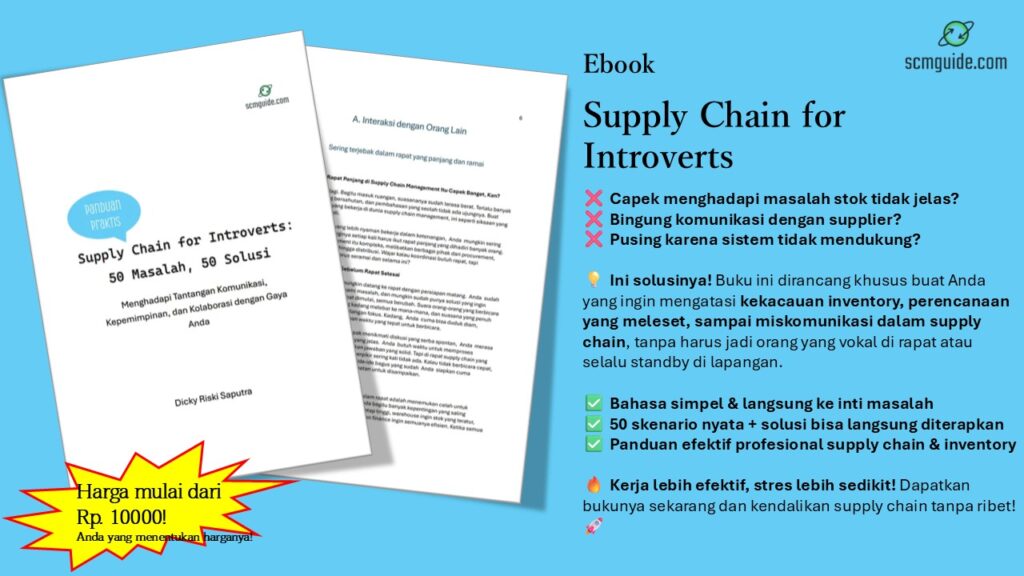Table of Contents
The Frustration of Being Overlooked
You’ve spent weeks analyzing the data, running simulations, and preparing a well-structured recommendation to optimize inventory levels. You walk into the meeting confident, present your findings, and… nothing happens. No one pushes back, but no one acts on it either. Worse, a few weeks later, a decision is made that completely ignores your input.
If you work in supply chain but don’t have the final say, you’ve probably been in this situation more times than you can count. It’s frustrating. You wonder why you even bother if no one is going to listen. But before you let the frustration get to you, let’s talk about why this happens—and what you can do about it.
Before we go further into this topic, don’t forget to follow my LinkedIn account. You’ll get more helpful insights on supply chain management there.
Decisions Are Not Always About the Numbers
In an ideal world, supply chain decisions would be purely data-driven. The best course of action would be chosen based on facts, forecasts, and optimization models. But in reality, decision-making in most companies is rarely that simple.
Maybe your proposal would save costs, but the company has long-standing relationships with certain suppliers, and breaking them would create political tension. Maybe your inventory reduction plan makes sense, but the CEO still remembers that one time stockouts caused a huge scandal, and now he refuses to take risks. Maybe your recommendation is solid, but your manager doesn’t want to challenge the VP’s preference because, well, it’s the VP.
Office politics, company culture, and risk perception play just as big a role—sometimes bigger—than the numbers themselves.
You might also like:
- Why Your Supply Chain Will Never Be Perfect and That’s Okay
- Feeling Overwhelmed by Supply Chain Chaos? Here’s How an Action Plan with Milestones Can Save You
Your Role Is to Recommend, Not to Decide
This might be hard to accept, but it’s the reality: unless you’re the final decision-maker, your job isn’t to force people to act on your ideas. Your job is to provide input, highlight risks, and recommend the best course of action based on your expertise.
And here’s the kicker—not every recommendation you make will be implemented, and that’s okay. Decisions are made with a broader perspective in mind, one that might include factors you’re not even aware of.
This doesn’t mean your work is pointless. Your insights still shape the conversation. Even if your proposal isn’t followed exactly, it might influence future decisions in ways you don’t immediately see.

How to Make Your Recommendations More Impactful
If you want your ideas to have a better chance of being considered, you need to understand how decisions are actually made in your organization.
First, figure out who really holds the power. It’s not always the person with the highest title. Sometimes, an experienced manager or a trusted advisor has more influence over decisions than a senior executive. If you can align your recommendations with what these key players care about, your ideas will have a better chance of gaining traction.
Second, learn the language of decision-makers. If your boss cares more about cost savings than efficiency, don’t just say, “This will improve operations.” Say, “This will save us $200K annually.” If leadership is risk-averse, highlight how your plan reduces uncertainty rather than introducing change.
Third, accept that timing matters. Just because your idea gets rejected today doesn’t mean it’s a bad idea. Business priorities shift. What isn’t relevant now might become critical in six months. Keep refining your recommendations and be ready to bring them up again when the time is right.
You might also like:
- Why Your Production Planning Keeps Failing and How to Fix It
- How Complex Is Supply Chain Management Really and Why Does It Seem So Overwhelming?
Don’t Take It Personally
At the end of the day, decision-making is complicated. If your recommendations don’t get accepted, it’s not necessarily because they were wrong or because your voice doesn’t matter. There are always bigger forces at play—some you can see, some you can’t.
The best supply chain professionals don’t get discouraged when their proposals aren’t taken. They focus on making the best recommendations possible, understanding the decision-making landscape, and positioning their insights in a way that aligns with the organization’s priorities.
So keep doing the work. Keep presenting your ideas. And most importantly, don’t let rejection discourage you. The right idea, at the right time, with the right champion, will eventually make its way through.
I hope you find it helpful!
Please share this article with your colleagues so they can also benefit. For more insights on supply chain management, follow my LinkedIn account. You’re free to use all articles on this blog for any purpose, even for commercial use, without needing to give credit.

 by
by 



